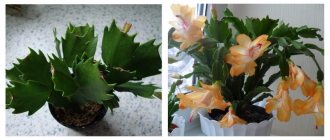Caring for an indoor (miniature) rose
Indoor rose is a relative concept. You can also domesticate an ordinary garden rose. It is enough just to create the appropriate conditions for it. But, unfortunately, only owners of fairly spacious premises can afford such a pleasure. But this is not enough. If in summer a rose bush growing in a spacious tub or pot feels more or less comfortable at home, then in winter it definitely needs a cold period of rest. You can't do without it. It is these conditions that can be very problematic to create. But in order for a home rose to live in your apartment, it is absolutely not necessary to acquire a large bush. There are a huge number of miniature roses on sale, specially bred for growing at home.
A little about the plant
A homemade indoor rose is not such a curiosity. The tea is not a tropical exotic like guzmania, eucharis, fuchsia, much less pineapple or banana. The miniature rose has many varieties, bred specifically for our home and apartment conditions. Usually, this is a fairly miniature plant, rarely reaching even half a meter in height. Some of them have a magnificent aroma, not inferior to jasmine or oleander, and some are completely odorless. There is no need to talk about the color range of miniature roses; it is as diverse as that of its garden relative.
Caring for an indoor miniature rose is not difficult and, as is commonly believed, is no different from caring for a garden rose. This is true, but there is one BUT... On the street, this plant is in natural conditions and these conditions mainly depend on nature itself, with some of our intervention. An indoor rose depends entirely on us, on how we care for it and what conditions we create, so it will grow and bloom.
How to care for an indoor miniature rose
Lighting
For normal existence, a rose needs all the maximum light that you can provide it. But this “maximum” should not include the scorching rays of the summer sun. All south-facing window sills are suitable for its maintenance. But the sun's rays are allowed only in the morning (southeast) or evening (southwest). At midday, protect your indoor rose from direct sun. If this is not possible, then it is better to place it on the east or west side.
Temperature
During flowering, which with proper care is sure to occur in the summer, a miniature rose will feel best in the fresh air. If possible, take it out to the balcony, loggia, front garden, take it with you to the dacha, etc. When placing it outdoors, take into account lighting recommendations. Roses do not like extreme heat, especially overheating of the soil. For garden plants this is not a particular problem, but a potted rose is a completely different matter. In a confined space, the soil can become very hot. To protect her from this, take only light-colored pots for the plant or wrap them with something reflective in the summer. If the rose is left indoors for the summer, then room temperature is suitable for it, but if you have an air conditioner in the room, keep the rose away from the flow of cold air.
Dormant period for indoor roses
In winter, the indoor miniature rose goes into retirement. And creating conditions suitable for her is perhaps the most difficult thing in caring for her. The temperature during this period should be +6-8 degrees. Proper wintering is the key not only to future flowering, but also to the very existence of the rose. This period begins soon after flowering, usually in mid-late autumn. The symptoms are common - the leaves begin to turn yellow. From this moment winter begins.
Note! Do not buy a blooming rose in winter. It is during this period that there are most of them in stores. These plants are grown in artificially created conditions and with a specially shifted flowering period. The temptation is great, but having bought such a plant, you are actually buying it for one season, until spring. After all, it was at this time that her rest period was postponed. It is almost impossible to create conditions for her at this time. In the vast majority of cases, after flowering, such plants soon die.
For many indoor plants to overwinter, it is enough to move them to the windowsill, where the temperature is below the average room temperature. But this option is not suitable for a miniature rose. The temperature is still high. The easiest way is to take it out onto a loggia or insulated balcony. But there is a catch here too... Just like overheating of the soil, indoor roses cannot tolerate overcooling. During wintering, the pot should be kept at a slightly higher temperature than the above-ground part of the plant. Therefore, when transferring a flower to a cool room, be sure to take care of insulating the pot. It can be wrapped in thermal insulation material or placed in a box with sawdust. Protect the plant from cold drafts and make sure that the temperature does not fall below the recommended one. If necessary, insulate the above-ground part of the rose as well. Around February, the plant begins to wake up. From this point on, he can be gradually accustomed to room temperature. If everything is done as it should, then already at the beginning of March the home rose produces its first buds.
Watering and air humidity
In summer, the rose should be watered abundantly and regularly, and the soil should not be allowed to dry out. But if the summer is not particularly hot or the plant is in the open air and it rains frequently, then beware of flooding the plant. Overwatering is more dangerous for indoor roses than overdrying. During the dormant period, it is also necessary to water, but extremely rarely. Usually one or two waterings over the entire period are sufficient. But it is necessary to reduce watering before the transition to wintering, after the end of flowering. Watering the rose begins with the appearance of buds. But it should be very moderate. As the plant grows and more leaves appear, watering increases. Water for irrigation is preferably at room temperature or even higher. Be sure to settle the water taken from the tap.
During the period of active development and flowering, especially if the indoor rose is indoors, be sure to spray it. Moreover, once every 7-10 days, give the plant a wash under a warm shower. Spraying cannot be ignored. The dry air will cause the leaves to dry out, but the worst thing is the appearance of pests. About them below.
Feeding
Roses only need fertilizer during the period of budding and flowering. Feed it once every 7-10 days with fertilizer for flowering plants. Towards the end of flowering, which usually occurs at the end of summer - beginning of autumn, stop feeding.
Transfer
The first transplant of an indoor rose is carried out after its purchase. But not at once. First, the plant must undergo mandatory quarantine and adaptation to your conditions. Usually, two weeks are enough to identify diseases and pests that were undetected during purchase, as well as for the plant to acclimatize. After this, be sure to transplant the rose into a slightly larger pot.
Advice. If the plant blooms, then it is impossible to replant it by removing soil from the roots! Just transfer the rose into a new pot along with a lump of soil and add fresh soil.
Planned replanting of indoor roses is carried out every spring. If no troubles have occurred during the winter, then there is no need for a complete transplant. The roots of the plant are quite delicate and it is not advisable to disturb them again. You can only lightly clean the top layer of soil, but without making any effort. Part of the earth, if it is composed correctly, will crumble on its own. In fact, this is also transferring into a larger pot, 2-3 cm in diameter and 4-5 cm in height.
The soil for indoor roses should be quite light and nutritious. I advise beginning flower growers to buy a ready-made specialized mixture. Those who want to make it themselves can use this recipe:
Four parts each of turf and humus (greenhouse) soil and one part sand (perlite).
Reproduction
The easiest way to propagate indoor roses is by cuttings. The technology is the same as for Chinese roses, ficus benjamin, fatwort, etc. This is done in the fall after scheduled pruning. From the pruned branches, healthy, well-developed cuttings with three to four buds are selected. If necessary, the cuttings are shortened to 15 centimeters in length and placed in a container with water. The water should be at least room temperature. After about 15 days, the cuttings will produce the first roots. Since the cuttings do not need a rest period at all, they can be left in water for quite a long time. During this time, the roots of the future rose will develop well. Then, towards the end of winter, you can plant them in the ground.
Trimming
After flowering, the rose is usually pruned. Although caring for an indoor miniature rose does not exclude spring pruning. After pruning, each branch should have 4-5 buds left, the rest is removed (no need to remove leaves). Pruning is a must. Otherwise, you won’t get abundant flowering.
Diseases and pests
If the care was correct and the domestic rose was kept in good conditions, then diseases and pests will bypass it.
But it is still possible for powdery mildew to appear, which is easily recognized by a white coating on the branches and leaves of the plant. At the first manifestations of the disease, treat the flower with foundationazole or any other suitable fungicide.
The most harmful pests are spider mites and aphids. Especially the tick. This pest is especially dangerous for roses. He is capable of destroying her in a matter of days. Read how to deal with it here. Aphids also cause considerable damage, but mainly they are limited to the destruction of buds. How to defeat her is written here.
Note! Dry air is especially conducive to the appearance of pests. Spray the rose more often and carefully inspect it periodically.
Rules of care
In order for the plant to develop normally, it is recommended to provide it with adequate and complete care.
Watering
The plant should be watered regularly. This is especially true during rapid growth and flowering. Excessive dryness of the soil causes serious harm to the rose. Therefore, watering is carried out immediately after the soil dries.
At the same time, it is worth remembering a sense of proportion
It is important that the earth does not become sour. Ornamental plants are highly sensitive to excess moisture
This is especially true in winter and autumn. Therefore, after budding stops, watering should be reduced. To moisten the soil, it is recommended to use settled and filtered water.
How to feed correctly
The plant requires systematic feeding. It is recommended to use fertilizers in spring and summer. This is done once every 2 weeks. It is recommended to alternately use mineral and organic compounds. It is worth choosing standard preparations that are suitable for flowers. It is recommended to mix the product with water before use.
Trimming
This procedure ensures good flowering and proper development of indoor roses. Pruning helps give the bush a beautiful shape.
Peduncle
It is recommended to trim the peduncle after flowering has completed if the crop is weakened. To do this, you need to take gardening gloves, sharp pruning shears and a container for cuttings. When flowering ends, the bud bends down and the petals fall off. It is these flowers that are recommended to be removed.
Stem
If the stems of the bush have become dark or wrinkled, they also need to be cut off. Healthy and strong branches are green or brown in color. If the stem is half healthy, it should be cut a little above the eye socket. If weakened and thin stems appear that are directed inside the bush, it is recommended to remove them too, cutting them off near the very base. They prevent the air circulation that the plant needs.
Leaves
It is necessary to trim the leaves if you want to get a crop with a long trunk and a thick top. When pruning in spring and autumn, leaves should be removed for sanitary purposes. This helps to ensure proper flowering of the crop.
Arrows
Weak shooters cannot hold heavy flowers properly. In such a situation, they must be removed.
Transfer
From time to time, indoor roses require transplants. To carry out the procedure correctly, it is worth considering many features.
Deadlines
With the systematic use of fertilizing in the summer, the soil does not have time to deplete. Roses are transplanted only if the soil has changed its characteristics - it has become denser or, conversely, resembles dust. The procedure is also carried out if the plant has outgrown the size of the pot. It is recommended to carry out manipulation in February, before the rose awakens.
How to transplant
To transplant a rose, it is recommended to place expanded clay at the bottom of the pot. If there are the required number of drainage holes in the pot, this step can be neglected. After this, the rose should be carefully removed from the pot and moved to a new one. Sprinkle the prepared substrate on top.
Treatment against pests and diseases
The crop may encounter various pathologies and pests. In such a situation, it is recommended to remove the damaged fragments and treat the crop with fungicides or insecticides.
Choosing a pot
To ensure full development of an indoor rose, it is important to choose the right container for its cultivation. The new pot should be larger than the previous one, several centimeters in diameter
It should be 5-7 centimeters higher in height. However, it is not recommended to use too large a container.
Bloom
When optimal conditions are created for the crop, it blooms every 8-9 weeks throughout the year. At the same time, the bush is covered with small decorative flowers of different shades. To make flowering more abundant, the plant should be moved to a cool place for the winter. He should be provided with complete rest and shoots should be cut to 10 centimeters.
In winter, the culture is dormant. It is recommended to prepare it for this period. To do this, it is worth reducing the number of waterings. They are carried out at intervals of 3 days. It is best to water the plant through a tray. It is not recommended to fertilize the flower during this period.
Varieties and their features
There are a lot of varieties of roses, but when purchasing another pet for your home, it is important to pay attention to the manufacturer. If the variety is from Holland, then there will be difficulties in growing and acclimatization. It is better to pay attention to varieties zoned in our climate.
- Bengal red rose is the most popular variety of indoor shrubs and is very unpretentious. It blooms very profusely, but the rosettes do not smell at all. The bush overwinters well at room temperature and does not require pruning.
- Polyantha rose – this variety is fragrant and easy to care for and has several subspecies:
- Triumph is a vigorously and long-blooming variety, with large bright scarlet buds, and requires additional nutrition. Tolerates winter well in a cool window.
- Miniature - the name speaks for itself, a small bush, rosettes of white or pale coral color. Propagated by cuttings. With proper watering, it hardly gets sick.
- Gloria is an unusually beautiful small-leaved bush that rests in winter. The bottom of the bud is dark, in the center it is scarlet, like tongues of flame.
- Clotilde - velvety fragrant flowers of a pale pink hue. Continues to bloom for a long time and winters well near the window in the apartment.
- Bourbon rose is a fairly large variety. It blooms for a long time in soft strawberry, yellow-cream and purple-red shades. The buds appear in mid-summer and are pleasing to the eye until the end of December. Then there is a short period of dormancy and, starting in March, the plant comes to life again and produces new leaves. Propagated by cuttings from mid-spring, feeding the seedlings with stimulants.
- The Irish rose differs favorably from its relatives precisely in the shape of its bud, reminiscent of a tulip with the pleasant color of ripe apricots. With constant trimming of excess branches and good care, it blooms profusely with large rosettes.
- Chinese mini rose is a variety of small-growing shrubs that is very popular among plant growers; it has many colors of buds. There are yellow, red, purple, white and ash species with a delicate scent and interesting shape of petals; they love a cool winter holiday.
- Tea roses are a divinely fragrant artificially bred variety originally from India. Miniature thirty-centimeter bushes, which are constantly dotted with fragrant flowers of the most unusual tones, are more suitable for keeping in the house.
- Remontant roses are a fairly large specimen and bloom twice per season. The bud has the shape of a glass with numerous petals. Usually blooms in different shades of scarlet. The yellow remontant species is less common. Loves cool wintering and propagates by cuttings or grafting.
- Hibiscus is a Chinese rose that blooms with bright red, white, yellow or orange double gramophones. It grows quickly, does not require special care and pleases the eye with pleasant green foliage. During flowering, the shrub must be fed with mineral fertilizers.
Caring for roses at home
After purchasing, you need to keep the plant on a southern windowsill for several days to adapt and then replant. It is necessary to bring home conditions as close as possible to those in the store, to avoid drafts and direct sunlight. After acclimatization, you can transplant the flower into a beautiful pot and add another specimen to your collection.
Lighting
House roses love fresh air, direct sunlight and warmth, but not heat. If you place it in a cool, shaded place, flowering may stop. Some gardeners make special paper screens to protect the plant from excessive sunlight, which can cause excessive flowering, which weakens the plant.
Temperature
The rose feels good at normal room temperature; in winter it needs rest at 12 degrees.
Air humidity
Flowers love high humidity. It is better to place the plant on a tray with wet gravel.
Watering
During the period of active flowering, it is necessary to water once a week, preferably directly at the root or in a tray, and in hot weather, moisten it daily. Excess liquid is drained from the pan. In winter, you need to water rarely, not allowing the earthen clod to dry out.
Roses, like people, love to bathe, so once a week you can give them a warm shower or spray them with a spray bottle. This procedure removes dust from the leaves and moisturizes the plant well. And the result is shiny greenery and fragrant buds, to the delight of the owners.
Soil for roses and fertilizer
House roses prefer well-fertilized soil, the quality of which directly affects the number and size of inflorescences. You can purchase a ready-made mixture for roses or prepare it yourself from equal proportions of peat, river sand, garden soil and humus. When watering, many gardeners add tomato fertilizers, mullein or horse manure to the water, which helps strengthen the seedling and develop the root system.
Top dressing
A month after transplantation, spraying is carried out with a concentrated solution of complex fertilizer such as “Rainbow”, “Epin”, “Pokon”. Fertilizers should be used during the flowering period, and in the autumn-winter period, growth stimulation should be stopped.
Some tips for feeding:
- Newly transplanted or diseased roses should not be fed;
- If there is high humidity in the room, you should not fertilize roses;
- It is better to fertilize in the evening, after watering.
Diseases and pests of roses
Tender buds can become sick under unfavorable conditions. Therefore, the plant must be regularly inspected for damage or pests. Rose diseases are difficult to treat, therefore, it is important to detect the problem in time and try to stop it at the initial stage.
Powdery mildew is a fungus that occurs when there is insufficient ventilation, crowded placement of plants and an overdose of organic matter. White spots appear on the leaves, after which they curl and fall off. Treatment consists of mechanical removal of the damaged areas and treatment with foundationazole.
If a white coating appears from the bottom of the foliage, and yellowness is visible on top, then this is the so-called downy mildew. We must try to tear off the damaged areas and spray with a solution of fungicides.
Spotting is of fungal and bacterial origin. Brown wet spots appear on the tissues of rose bushes, gradually increasing in size. The foliage falls and the plant may die. It is treated by spraying with copper sulfate and removing the diseased areas.
Leaf rust – occurs due to improper care, excessive dry air and elevated ambient temperatures. The disease manifests itself as orange pustules on the leaves. You can save the plant if you remove all diseased foliage and create comfortable conditions for the plant.
Aphids are insect pests that attack stems and quickly colonize. You can fight it with a special drug - Intavir.
Spider mites are an aggressive pest of roses; in a short time they entangle the branches, the foliage falls off, and the buds do not develop. The “Fitoferm” insecticide will help in the fight against the disease.
The plant should be sprayed with medications outdoors, then left in isolation for a while. Later you can bring it into the house.
Pruning rules
To form a beautiful crown of a domestic rose, pruning must be done in early spring. After this, the bush forms strong young growth. It is necessary to feed the rose and provide good lighting. Pruning is also done during the period of intense flowering to strengthen the root system. Regularly remove wilted inflorescences and weak shoots.
For the procedure, use a sharp knife or garden pruning shears. The shoot is cut off near the bud at a slight angle.
Reproduction
In the summer, you can start breeding beautiful roses. To do this, cut cuttings from faded stems, preserving 2-3 buds. Moreover, the bottom is cut at an angle, and the top is cut exactly above the growing bud. The cuttings are immersed in clean water or peat-sand slurry. You need to keep the stem in water until the root appears, gradually adding fresh water. Then you can plant the flower in the prepared soil, where the seedling will begin to develop.
Reproduction of indoor roses
The crops in question are propagated by cuttings. To do this, it is necessary to select lignified shoots up to 15 centimeters in length with two buds from the mother bush. There are several ways to propagate indoor roses; let’s look at them in more detail.
Soil
For rooting, it is necessary to treat the lower cut of the vegetative part of the crop with the preparation “Epin”. After this, the cutting is buried 1/3 of its length into a moistened nutrient substrate with the lower bud embedded in the soil.
The shoot is oriented at an angle of 45 degrees relative to the surface of the earth. Next, the plant is covered with a plastic bag or glass jar. The cover is removed after rooting.
Water
Annual shoots of indoor roses, cut after flowering, are rooted in water.
The cuttings are placed in settled tap liquid at room temperature, until roots appear, and then transferred to a moistened nutrient substrate.
During the rooting process, it is necessary to periodically add liquid to a jar or other container.
In potatoes
For this method of propagation, you need to make a hole in the potato tuber along the diameter of the crop stem.
Now we fill the flowerpot with a nutrient mixture, place a tuber there and stick a cutting in, make an impromptu greenhouse using a cut plastic bottle or plastic bag.
We transfer the container to a warm room, protecting the culture from direct sunlight.
Note! The decorative rose receives the carbohydrates and starch necessary for development; moreover, the cutting is constantly in a humid environment, which contributes to the rapid formation of the root system.
Winter care rules
In winter, caring for a home rose is the most labor-intensive. From November the flower enters a dormant period. Inexperienced plant growers sometimes consider the rose to be dead. But this is not so, it must be kept in a state of hibernation until spring, creating the necessary conditions.
There are sequential steps that must be followed in order for the rose to survive.
- The plant should not be left to overwinter in a warm room, it may die;
- the flowerpot should be taken to a cool place: on a veranda or glassed-in loggia;
- ensure that there are no drafts or frosts in the storage area;
- Some lighting is welcome, as is fresh air.
When buying a varietal plant, be sure to ask the seller about all the intricacies of maintaining your favorite specimen, weigh your capabilities and desire to engage in this painstaking task. Only with proper care will a beautiful flower smell sweet and delight its owner.
Features of care
The tea rose will feel good if it is on the windowsill in a room whose windows face south or southwest. So she can stand the whole winter and delight with her beauty. In summer, the flower may shed its leaves in response to too hot weather. It is worth remembering that caring for a flower at home requires special attention to temperature changes.
Read also: Features of caring for roses in the garden in spring: planting, growing and propagation
If you want your plant to bloom vigorously, then you should provide it with a general room temperature of about twenty to twenty-five degrees Celsius. It is necessary to protect roses at home almost constantly. Proper planting and care of your home tea rose is the key to ensuring that the flower will please you and not get sick for a long time.
To prevent the plant from shedding its leaves in winter, you should be especially careful when purchasing this flower. Bengal roses, which can bloom all year round, are optimal for indoor growing if they are provided with artificial lighting in winter.
The tea rose will feel great if you take it out onto the balcony or into the yard. But you shouldn’t do this immediately after purchase. The flower needs to adapt to its future habitat. Before you take it out into the clean air, you need to prepare the plant. Regular ventilation of the room is ideal for this.
The tea rose needs proper watering, because it is one of the key aspects for its life. It is worth remembering that the soil in the pot should be moist, not wet. Even with good drainage, the plant can die from excessive watering. The water required is clean and preferably warm.
The leaves also require moisture, but it must be given to them carefully. You should pour warm water into a spray bottle and spray it so that it gets only on the leaves of the plant, but not on the flowers. Feeding is done from early spring until the end of August.
You must also remember about the most common diseases to which this beauty is susceptible. Spotting can appear on the plant if the soil is too wet, and powdery mildew will be a consequence of excessive feeding of the flower. Therefore, you should pay special attention to watering, as well as seasonal feeding of roses.
Optimal conditions for growing indoor tea roses
When purchasing a tea rose bush, ask the seller what conditions the plant was in in the store. By recreating them to the maximum, you will help the plant adapt faster to the new room.
Location and lighting
In summer, the plant should have access to fresh air and good lighting. South-west or south-east window sills are best suited. In summer, if the sun is strong, the rose may fall off. You can place the rose in a pot on the balcony or loggia, and move it into the room in the fall. In winter, the best place would be a south window, but away from heating appliances.
Temperature
The optimal temperature regime for roses is 20-25 °C. There should be no drafts in the room. During the rest period, the temperature should be maintained at about 12 °C. In the spring, the plant needs to be hardened off by taking it out onto the balcony or into the yard for a while, while the air should be sufficiently warmed up.
Pot and soil composition
Tea roses must be planted in universal soil intended for domestic roses. To prepare it yourself, take turf soil, humus and sand (4:4:1). Add one tablespoon of complex mineral fertilizer to this soil mixture.
Choose a pot with a larger diameter than the one in which you purchased the plant, preferably with drainage holes.
The height of the pot is up to ten centimeters. Place expanded clay or river pebbles on the bottom.
Basic rules of cultivation and care
Modern garden proud beauties have good immunity to small temperature changes and are able to grow in not very favorable weather conditions. The same cannot be said about the graceful beauty in the room. Roses of this variety are famous for their fastidious nature.
Delicate pink tea rose flowers
Temperature and air
Place the capricious woman in a room where the sun's rays penetrate well and there is also access to fresh air. It is best to set up a rose garden in a room whose windows face southwest or southeast.
Flowers are placed on the windows taking into account the seasons of the year. You should be very careful about the air temperature. If you place flowers on the south side, in summer the plants will suffer from the heat and may wilt. However, in winter this arrangement of roses is only welcome.
If all conditions are met, the plant will bloom profusely and delight the eye with large, beautiful buds.
In spring, tea rose needs fresh air
With the onset of spring days, roses especially need fresh air. When the weather becomes warm enough, they can be taken out onto the balcony or into the yard. However, before this, the flowers are prepared for the open air by hardening off. This can be done by regularly ventilating the room well.
Outdoors, flowers are placed in such a way that they are not exposed to ultraviolet rays. Initially, it is arranged in shaded places. Within a month, she should fully adapt to street conditions.
Multicolor tea rose
Lighting
To prevent shedding of leaves in winter, when purchasing a plant, pay attention to varieties that are best suited for keeping indoors. For example, the Bengal variety can bloom continuously, especially if there is good light during the winter months.
Rose varieties suitable for growing indoors
For a plant to feel great, it needs enough light. With the onset of summer, it is placed on the sunny side, but care is taken to ensure that the air temperature is not too high. In winter, daylight hours are increased with the help of artificial lighting.
The dream of every gardener is lush roses with abundantly blooming buds. To do this, you need to constantly turn the plant towards the sun. This is done to ensure that the flower develops evenly. Then it will be beautifully shaped and lush.
Tea rose in the exterior
Watering and fertilizing
When watering, observe moderation. Its intensity is determined by the soil in the pot. Make sure that the soil is slightly moist, but do not allow the soil to become wet.
In winter, the plants are kept in a cool room, so the amount of watering is reduced. Check the soil periodically to ensure it does not dry out. The water should be settled and at room temperature. You can read more about caring for roses in autumn and winter in our article.
For feeding, mineral fertilizers are used, which must be introduced with the arrival of spring and before the beginning of autumn. You can use both ready-made preparations and natural fertilizer. A good result is obtained by feeding with a solution for which bird droppings and cow excrement are used.
Watering a tea rose
Feeding should be done regularly. The “health” of the plant depends on well-selected ingredients and their quantity. If not fed properly, the beautiful rose may wither and the leaves may even fall off.
Comprehensive care for tea roses at home
Caring for a rose in a pot does not tolerate laziness and forgetfulness. The possibility and duration of its flowering and life in general depends on how correctly and timely you care for it.
Subtleties of watering
During the dormant period, the rose is watered only when the soil dries out. Due to excess water, the soil in the pot becomes compacted, and the root system does not receive oxygen.
When the rose has bloomed, it needs watering once a week, in very hot weather - daily, but do not overdo it. How to water a rose in a pot during a hot period, so as not to ruin the plant: into a tray, draining excess water. It is important that the soil is always moist. The plant needs to be watered at the root. To remove dust from the leaves, spray the rose; you can take a warm shower once every seven days.
Air humidity
To create a humid atmosphere, spray, but it is not advisable to get it on the flowers. The water should be at room temperature. In summer, spraying is carried out twice a day: in the morning and in the evening. You can arrange the pot on a tray with damp coconut fiber. When washing the leaves, keep in mind that the rose is afraid of drafts; before you take it out to the balcony (in summer), let it dry.
Did you know? Tea rose is widely used in perfumery, aromatherapy (relieves weakness and dizziness), in cosmetology (lotions, creams, masks, care products for problem skin) and even in cooking (jam, decorating desserts with petals, tea).
Tea rose feeding
A month after transplantation, the plant is sprayed with complex preparations, such as “Epin” or “Rainbow”, this will give the rose nutrition for development and growth. What is the best way to feed a rose at home? Experts recommend purchasing special fertilizers for home roses. In this case, you will be sure that your pet has received the full range of useful elements and minerals she needs. In addition, there are instructions on the package, following which you will not harm the rose by overfeeding it.
Important! If the air humidity in the room is high, you should not fertilize the plant. It is not recommended to fertilize a newly purchased rose. It is advisable to fertilize in the evening after watering.
Rules for pruning indoor flowers
How and when to prune a rose in a pot? Formative pruning is carried out in early spring; during the flowering period, some shoots are pruned to strengthen the root system. After flowering, the inflorescences are removed: they prevent the plant from preparing for the dormant period.
Pruning is carried out with a sharpened knife, removing branches at an angle near the bud. Young and strong shoots are trimmed to healthy tissue, and old and dried shoots are trimmed completely. Of the two shoots grown from one bud, the weaker one is cut off.
Secrets of care
Care is the same as for ordinary roses:
The planted plant must be earthed up immediately using peat or coconut substrate. This will protect the rhizomes and stems from drying out or freezing for the entire adaptation period.
It is recommended to water no more than once a week, so as not to provoke the development of fungus, in copious amounts and in the morning, water should not touch the leaves. It is better to place a watering hose with slow water pressure under the stem of the plant for a while.
Take preventive measures in the form of spraying (from bottom to top), with a solution: dissolve 100 g of colloidal sulfur in 100 liters of water, the first 2 sprays with an interval of 2 weeks, then once a month.
After the first flowering, you need to remove fading inflorescences and prune annually to shape.
The rose produces its first flowers on lateral branches of the 1st or 2nd order, which grow on the stems of the first or second year; repeated flowering appears at the tops of the shoots. The first flowering is the most abundant, so the shoots sometimes cannot even withstand the weight of the flowers and begin to sag or break.
To preserve the plant, from the second year onwards, in the spring you need to prune 1/3 of the annual shoots and 2-3 buds of the lateral shoots. After the first flowering, be sure to remove the wilted inflorescences, and the rose will delight you with flowers again.
At the first frost in cold regions, roses should be prepared for winter: remove old inflorescences, remove painful shoots, cover the base of the plant with fertilizers to a depth of 35-40 cm.
It is recommended to remove climbing varieties from their support, arrange them and place them on a prepared area of dry foliage (or spruce branches), make a frame structure, cover the top with burlap, then with polyethylene film.
Be sure to clear the stems of leaves and treat them with a solution of iron sulfate (3%). Leave the ends of the winter house open until the temperature stabilizes around -5°C.
Ventilation is required periodically both in winter and in spring; with spring warming, you can gradually free the roses from their shelter, preferably on a cloudy day, and unwrap them thoroughly only at the very end.
Wintering tea roses
In winter, domestic roses need no less care. Their rest period begins in November. During this period, the plant does not bloom, the rose in the pot constantly sheds its leaves and looks very sad. The plant needs to be moved to a cool room, this can be a glazed balcony. There should be no drafts or frost in the room. You can use minimal lighting; watering is carried out rarely, as the soil in the pot dries out. The water should be the same temperature as the room temperature.
Seasonal care: autumn
Do the flower queen's requirements differ at different times of the year? Flower growers say: in autumn, winter, spring and summer, caring for this plant is significantly different. We propose to consider each stage in detail. Let's start in the fall. Caring for a tea rose at home with the onset of cold weather means that the pot must be brought from the loggia or balcony into the house. This should be done when the thermometer begins to show a temperature below 15 degrees. It is best to place the plant on the south side near the window at this time. In autumn, the development of buds and their growth stops. The plant does not need feeding; it is also recommended to reduce watering. Since the flower begins to prepare for winter, it does not require special care.
The temperature at this time should not exceed +17 degrees. The air in the room where the flower is located should be moderately humidified. You should not place the plant pot next to heating appliances or any equipment, such as a microwave oven, TV or computer. The plant will feel much more comfortable on the windowsill, where cool air comes from the street.
Tea rose transplant
After purchasing, give the plant time to adapt. Transplantation of domestic roses is carried out using the transshipment method. The bush is carefully removed from the pot, the roots are straightened, removing the stuck soil from the old pot. It is advisable to take a larger pot for the plant, made of natural material. The pot must have holes and drainage at the bottom. After planting in a new pot, the rose is placed in the shade for a day. Then they are assigned to a permanent place of detention.
Attention! Transplantation should be carried out before the growing season. If you bought a plant in bloom, do not touch it until autumn, but only provide care.
How to propagate tea roses at home
Summer is a suitable period for propagating tea roses. After the rose has bloomed, cuttings are taken. The top of the cutting is cut exactly above the growing bud, the bottom - at an oblique angle. There should be several buds on the cutting. Dip the cutting into water and keep it there until white roots appear, while periodically adding fresh water.
When strong roots appear, the cuttings are ready for planting in a pot. Caring for it is the same as for an adult plant.
Interesting! There are several versions of the origin of the name tea roses. The tea rose was brought to Europe from China, where tea is grown, and ships carrying tea from China were called “tea clippers.” The aroma of rose is similar to the aroma of Chinese green tea. The unopened bud is shaped like a Chinese tea bowl. This variety of roses is the only one from which an aromatic tea drink is prepared.
Why is a rose called a tea rose?
Tea rose came to European countries from China in the 19th century. The beauty received its name due to the aroma, which is individual and inherent only to this species. China is known for its numerous and aromatic teas, and the smell of the flower resembles one of the varieties.
Tea rose.
Also, there is an opinion that the appearance of the queen of flowers resembles a Chinese tea bowl.
Only from tea rose can it be possible to prepare aromatic and tasty tea; with other types this is impossible.
Diseases of domestic roses
Diseases of these delicate flowers are difficult to treat. The most common of them:
- Powdery mildew. The causes of the disease are excessive amounts of organic fertilizers and poor ventilation of the room. The leaves turn pale, curl and fall off. Damaged parts of the rose must be removed and treated with Fundazol.
- Downy mildew. With this disease, the leaves become covered with a white coating on the bottom and a yellow coating on the top plate. The reasons are the same as for powdery mildew. Treatment is spraying with fungicides.
- Spotting. Occurs when overwatering and appears as brown spots on parts of the plant. Spraying with copper sulfate will help here.
- Rust. Dry air and high temperature create a favorable environment for rust. Orange-brown pustules appear on the leaves of the rose. The entire infected part of the plant must be removed and more comfortable conditions provided.
Disease prevention is quite simple: you need to know how to properly care for a tea rose in a pot, what care is optimal for it.
The very name “tea rose” exudes home comfort and warmth. For some reason, you imagine yourself on a winter evening by the fireplace on a thick carpet, wrapped in a fluffy blanket with a cup of aromatic tea in your hands.
Was this article helpful?
Write in the comments what questions you have not received an answer to, we will definitely respond!
You can recommend this article to your friends!
You can recommend this article to your friends!
How to properly care for tea roses at home
Tea roses are the same roses that we give in bouquets. This fact alone already serves as confirmation of the enormous popularity of this group of roses. But tea roses are very different. You need to understand the varieties, the climatic zones, and know many other things in order to succeed in growing them.
General view of Hybrid Tea rose
Tea rose flowers can have up to 60 petals and reach 12 cm or more in diameter. Tea roses are characterized by elongated, pointed, slowly blooming buds. Roses can grow anywhere; they stretch from 90 cm to 1.8 m in height and 1.2 meters in width. The growth rates of these roses depend on the variety and growing conditions. The long, strong stems of tea roses make these roses ideal flowers for pruning. Tea roses can be any color, with many color gradations.
Tea rose. Choice. Care
Different types of tea roses are not the same, and in this they are similar to all other plants. The idea that all tea roses are much more beautiful than all other roses in the world is absolutely wrong. The key to choosing the right tea roses is to choose varieties that suit your climate and climate zone. If the summer in your area is humid, then pay attention to protection against downy mildew. If the summer is dry, then look at the resistance of tea roses to heat and a resilient root system.
Decide on the growing zone. Tea roses, depending on the variety, can withstand frosts from -12°C to -23°C. If you live in an area that experiences severe frosts, your tea roses will need additional protection. This will increase the indicator to -29°C. Tea roses with thick petals are more resistant to changing weather and bloom longer than those intended for pruning into bouquets.
Growing tea roses
- If your tea roses arrive bare-root, remove the packaging from the roots and soak them in a bucket of water for 2 to 24 hours.
- Make sure the soil around the planting site is free and rich in organic matter.
- Dig a hole large enough for the tea rose roots, usually 20-25 cm in diameter.
- Make a mound of soil with a hole in the middle and plant the roots of the tea rose there.
Like many cultivated flowers, tea roses are grafted for greater frost resistance and protection against disease. A tea rose branch with buds must be grafted onto a trunk with roots, using a frost-resistant, disease-resistant rose as a rootstock. The ball of buds should be at the base of the plant. In warm climates, the ball of buds should be at a height of 2.5 - 5 cm above the soil level. In cold climates, young embryos should be buried in the ground 2.5 - 5 cm below the soil level. Tea rose sprouts should always be protected from the cold if the climate is cold. Fill the hole halfway with soil and water thoroughly to eliminate any air gaps. Fill completely with soil and water again. When a tea rose is planted, its top can be trimmed to improve growth.
Watering tea roses
As with most garden plants, the soil of a tea rose should be moist to a depth of 2.5 - 5 cm. Watering once a week is enough. Of course, this depends on the specific climate and breeding conditions. Hot areas and sandy soil need more frequent watering than cold areas. For orientation, we can say this: if the soil is 7-8 cm dry, then it is time to water.
- You only need to water the soil, but not the leaves of tea roses, to prevent diseases.
- Tea roses should be watered deeply to encourage increased root growth. Strong and deep roots will help tea roses survive dry periods.
Feeding tea hybrids
Tea roses, since they have repeat flowering, need thorough and regular feeding.
Start in early spring or a month before new growth or when you remove protection from winter cold. Continue fertilizing your tea roses every week or every two weeks, depending on the fertilizer you use. Look for a balanced fertilizer or a rose-specific fertilizer that is labeled specifically for roses. Tea roses prefer a slight level of acidity (6.0 – 6.5 pH).
The presence of iron is also very important. If the leaves of a tea rose turn yellow with green veins, it means the plant is experiencing a lack of iron.
Magnesium sulfate (table salt) is required for intense flower color and encourages active flowering of tea roses. If the soil already contains a lot of magnesium, then a new addition will not add anything. If not enough, then add 1/4 - 1/2 cup to each plant once or twice a year and water properly.
You should stop fertilizing 6 weeks before the expected first frost. The tea rose should not be encouraged to grow again, as the plant may die if the weather changes.
Mulching a rose bush
Mulching is necessary to cool the roots of the tea rose and conserve water. A layer of mulch of 7-10 cm is applied in the spring, when winter protection is removed. In warm climates, mulching of tea roses is used when the buds begin to swell.
Use in the garden
Tea roses are planted in traditional rose gardens. They are often planted in separate rows because this makes them easier to care for. The distance between tea rose bushes should be from 25 to 65 cm, depending on the growth characteristics. Do not allow weeds to grow.
Tea roses are grown for their magnificent blooms, but not for their landscape appearance. They can work surprisingly well as a hedge, especially with evergreens that are slow growing and wrap around their gangly branches. Artemisia, true geraniums, lavender and nepeta work well in partnership with tea roses.
Trimming
Pruning tea roses is not much different from pruning other types of roses. If you regularly trim branches containing budding roses, you will have less pruning work to do in the spring. When choosing tea roses, choose the least thorny varieties. Most teahouses have the word 'smooth' somewhere in their name. Fewer thorns mean fewer problems when pruning. Prune tea roses in early spring, before growth begins.
Before you prune your rose, make sure there are a few leaves left on the tea rose stem. Trim 0.6 - 0.7 cm above the sprout, pointing outward. It is necessary to cut at an angle of 45° so that the water drains well. First of all, you need to trim off all the dried, diseased and damaged branches of the tea rose. Dry, thin branches that are less than 1.2 cm in diameter should also be trimmed. When pruning strong branches of tea roses, you should leave a third of their length, measuring 21 - 42 cm. Hard pruning of tea roses encourages the plant to produce strong stems and large flowers.
Pruning tea roses allows the plant to open up and shape; pruning also gives the plant the opportunity to focus its energy on fewer flowers—you benefit in quality.
{SOURCE}
Basic rules of care
To make it easier to navigate what conditions are needed for the normal development of capricious flowers, you need to remember certain rules:
Tea rose in a flower garden
- The plant is planted only in the soil intended for this variety.
- The proud beauty may stop blooming and even begin to fade if the ambient air conditions are unstable. If you plan to put it outside, it must be hardened beforehand. How is it done? With the onset of the first spring days, the windows are opened in the room for several hours. This method of ventilation will significantly “strengthen” the flower and ensure abundant flowering in the summer.
- If the queen of flowers begins to get rid of leaves and flowers, she gets too much sun on this windowsill, she is hot.
- Comfortable temperature for the full development of the plant in summer is 25˚C. The rose should not be taken to a place where it will be exposed to the scorching rays of the sun. In this case, she is left in her usual room.
- In winter, it is vital for the plant to receive the “proper” portion of light. It is enough to turn on the lights after dark and turn them off at night.
Tea rose cuttings
More detailed information about mineral and organic additives can be found on thematic forums, or by watching videos from experienced gardeners.
Video - Feeding tea roses
It is best to buy ready-made fertilizers in flower shops, which come with a recommendation for diluting the drug.
Feeding roses











